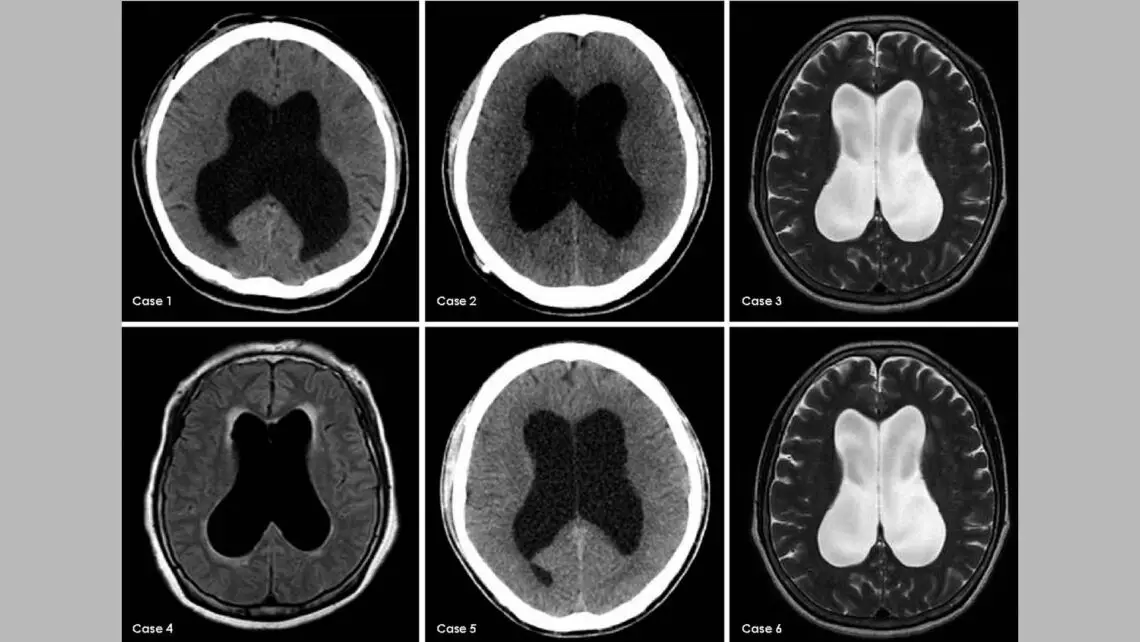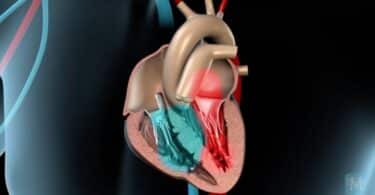Hydrocephalus chronicus develops itself, in grown persons, of acute attacks of different forms of meningitis, which may have been brought on by irritations of the brain from exposure to heat or cold, external injuries, the abuse of intoxicating drinks, or too great mental exertion.
In children, even if it originates after birth, it is nevertheless identical with the affection called that form which children are born with. It is probably the consequence of an inflammatory process of the lining of the ventricles during foetal life.
Perhaps it is a deficiency in the proper assimilation of calcareous substances which form the bones. Why it is, we do not know in either case. Some women have given birth to hydrocephalitic children several times in succession, without any apparent cause.
As the water collects in the ventricles while the sutures of the bones have not yet united, its constantly increasing bulk drives the bones asunder and enlarges the head to an enormous size. Or, if we take the other view, which is perhaps the more plausible of the two, we might explain it in this manner:
The insufficiently developed bones are not capable of restricting the growing brain within its proper limits. They give way here and there, and the brain gains entirely too much space within the skull. As, however, a vacuum can never exist, it is at once filled up with the general equalizing medium, water or serum.
In this way the inner pressure becomes still stronger, and the still deficient bony structure becomes still less capable of restraining the increased internal pressure. It gives way again and again; and for the same reason the effusion of water must increase still more, until at length the whole cranium attains to an enormous size. The disease can be recognized at once, although it may not have come to its full development.
There is a disproportion between the size of the skull and that of the face. The fontanels are much wider than usual, and the frontal opening may be traced down into the frontal bone, and laterally, down between the parietal and frontal bones.
The bones themselves feel thin under pressure of the fingers and externally the veins appear greatly enlarged, shining through the skin. All these external changes appear only when the collection of water is very considerable. There have been found from six to ten pounds of serum within the ventricles, which then appear enormously distended and thickened, while the substance of the brain in the neighborhood is wasting away.
A small amount of serum does of course not change the external form of the cranium. Neither is it changed should the effusion take place at a later period, when the sutures of the skull bones have closed. To this there are a very few recorded exceptions.
THERAPEUTIC HINTS — The most important remedies for this affection are: Arsen., Calc. carb., Phos., Helleb. and Sulphur.
Editor’s Note: The keynotes below were added based on descriptions in Homoeopathic Therapeutics by S. Lilienthal, M.D.
Arsenicum: Great depression of the vital forces, manifested by great prostration, emaciation, pallor, thirst.
Calcarea carb. Anterior fontanelle wide open, head very large, copious perspiration on head and upper part of body.
Phosphorus: Child dull and inclined to sleep all the time, vomits drinks as soon as they become warm in the stomach; coldness of feet and legs.
Helleborus: Rigidity of the muscles of neck and limbs, strabismus, dilated pupils, soporous sleep, dryness of nostrils, lower jaw hangs down, or chewing motion of the jaw, the child drinks water greedily.
Sulphur: Head falls backward, prefers to lie with his head low, face pale or red, sour breath, flashes of heat, great hunger, redness and excoriation around the anus, constant sleepiness, but only sleeps in short naps.
From: Special Pathology and Diagnostics with Therapeutic Hints – C.G. Raue, MD (1882)






